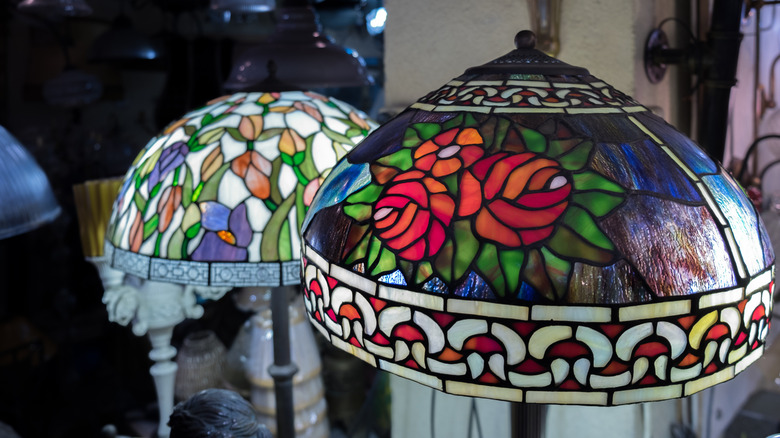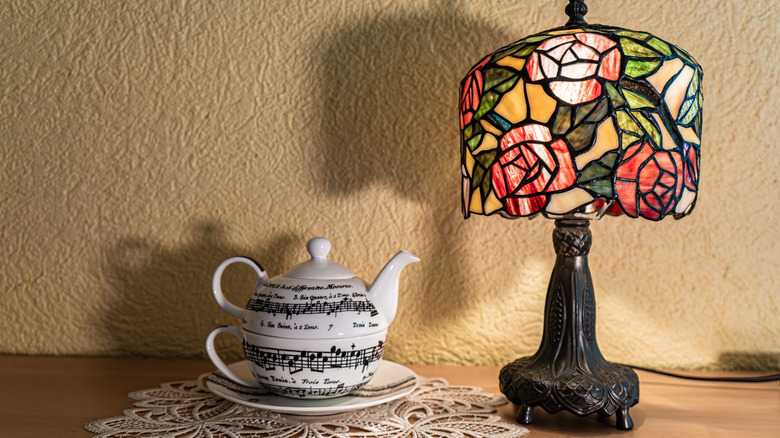How To Tell If Your Vintage Flower Lamp Is Tiffany Glass
If you are wondering how to find the perfect vintage lamp for your space, and especially what type of lamp you want to shop for, know that few lamps are more captivating than a vintage flower lamp. The way the light filters through colorful petals, casting a warm and inviting glow, just evokes a sense of timeless elegance. But if your floral find has that extra-special sparkle, you might just be holding a piece of art history: A genuine Tiffany lamp. More than just lighting fixtures, Tiffany lamps are renowned for their beautiful, high-end craftsmanship, making them highly sought-after collector's items. The vintage lamp is also making a huge comeback, despite stopping production in 1913.
So what exactly is Tiffany glass, and why does it inspire such a cult following? Developed by Louis Comfort Tiffany in the late 19th and early 20th centuries, Tiffany glass isn't just stained glass — it's a revolutionary art form. Tiffany pioneered innovative stained glass techniques, like the copper foil method, which allows for more intricate designs, like dragonflies and flowers. He also used opalescent "drapery" glass, which gives the lamps their characteristic look, texture, and lumosity. This carefully selected and hand-cut approach to glass meant that the lamps looked more like a work of art than just a light fixture. This artistry is also why the vintage lamps have remained popular and in high demand by collectors around the world.
Tips for identifying authentic Tiffany glass
Now let's get to the exciting part: Learning how to tell if your vintage flower lamp is a genuine Tiffany. While many lampmakers try hard to emulate the iconic Tiffany style, especially since they are coming back into style, there are a few key indicators that set the real deal apart from the knockoffs. First, examine the stained glass itself. True Tiffany glass exhibits a unique depth and variation in color and texture within a single piece. In each segment, look for subtle streaking that kind of looks like the glass was painted in vibrant colors. These lamps use opalescent glass, which has a milky and shimmering quality, and each piece is meticulously hand-cut and fitted together, with smooth, even solder lines.
Next, consider the base material and design. Tiffany lamp bases were typically made of high-quality bronze that would've patinated with time and usually featured intricate details like twisted vines, tree trunks, or mosaic work that matched the shade's design. Additionally, these bases are heavy, so they can provide enough stability for the glass shades, which were often heavy. This is a point where many fakes are identified as they typically have lightweight or cheaply-made bases.
Finally, and most importantly, look for the Tiffany Studios signature. Many (but not all) true Tiffany lamps bear a signature; these are usually on the rim of the shade, on the underside of the base, or on a metal tag. Common markings include "Tiffany Studios New York" or "L.C.T. Favrile". This is another thing that can be faked, so if you're unsure about the signature (or any aspect), consult a reputable antique dealer.

